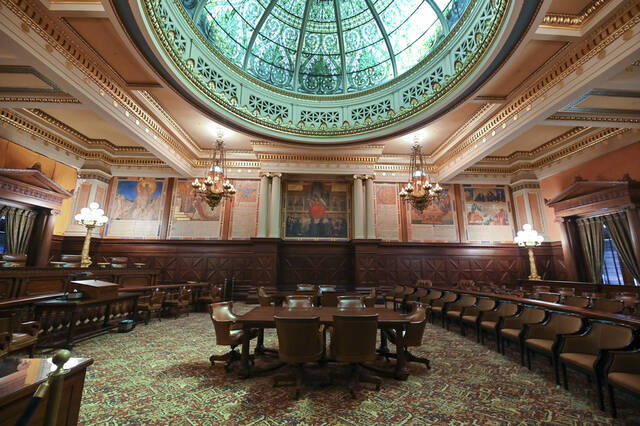Editorial: Pa. Supreme Court retention is historically brutal fight
People talk a lot about “election years.”
When they use that term, they usually mean the presidential elections that roll around every four years. Perhaps they mean the midterms — the largely legislative elections that come up every two years. Maybe they mean the years when gubernatorial elections are held — in Pennsylvania, the governor’s race is on the ballot again in 2026.
But the odd-year elections? They are sometimes shrugged off without much thought beyond the impact of local races.
That’s not happening this year — not in Pennsylvania.
The U.S. Supreme Court justices are nominated by the president and confirmed by the Senate. They then serve lifetime appointments. That means they sit on the bench until they resign like Stephen Breyer, who stepped down in 2022, or die, as Ruth Bader Ginsburg did in 2020.
That doesn’t happen in the Keystone State. The seven members of the state Supreme Court are elected to 10-year terms. When that 10 years is up, they don’t exactly run for reelection. There is a straight up-or-down retention vote.
If justices are retained, things move on as normal. They continue to serve until the next retention vote or until they reach the mandatory retirement age of 75.
But if there are enough “no” votes, a justice’s term is done. A new round of votes to find a replacement is conducted, but that takes time. In the interim, the governor nominates a temporary appointment, who must be confirmed by at least two-thirds of the state Senate.
If you don’t remember this being an issue before, that’s probably because of its rarity. Pennsylvania’s Supreme Court is one of the oldest appeals bodies in the country, with 67 years on the U.S. Supreme Court. Only one state Supreme Court justice has failed to earn retention.
That was Russell Nigro in 2006, amid the uproar over the midnight pay raise. He was replaced with Cynthia Baldwin, who served just shy of two years before being replaced by current Chief Justice Debra Todd.
This year, Pennsylvania voters will be asked to decide whether to retain Justices Christine Donohue, Kevin Dougherty and David Wecht. It is the most contentious retention vote the state has ever seen.
It mirrors the bitterest fights over presidential, gubernatorial or legislative candidates. It features the kind of organized, aggressive campaigning that is commonplace in those big races.
On the Republican “vote no” side are a barrage of slick mailers and other ads. Pennsylvania billionaire Jeffrey Yass is seen as a force, pouring money into political action committees.
On the flip side, Democratic “vote yes” campaigning is targeting digital and TV ads.
The polar opposition is a problem in more than hostile campaign rhetoric and allegations of misinformation. The partisan wall could create a judicial roadblock in Pennsylvania courts if all three justices fail retention.
Pennsylvania has one of the few split legislatures in the country, with Republicans controlling the Senate and Democrats the House, while Gov. Josh Shapiro is a Democrat. If three temporary justices needed to be appointed and confirmed, that seems like an impossible task as the parties head toward a fourth month of a stalemate over the budget.
That would leave the other four justices — two Democrats and two Republicans — to shoulder the burden.
Now more than ever, we have to realize that every year is an election year — and all of them have consequences.
Remove the ads from your TribLIVE reading experience but still support the journalists who create the content with TribLIVE Ad-Free.

